CNC Milling Machine Uses, Types, and Benefits Explained
In the modern world of manufacturing, precision and efficiency are everything. Whether it’s producing aircraft components, medical implants, or automotive parts, industries rely heavily on advanced machining technologies to deliver flawless results. Among these technologies, CNC milling stands out as one of the most versatile and widely used processes.
This guide will take you through what CNC milling is, how it works, the different types of CNC milling machines, the kinds of operations it can perform, its applications across industries, and the benefits it offers. By the end, you’ll have a clear understanding of why CNC milling remains a backbone of modern manufacturing.
What is CNC Milling?
In simple terms, CNC (Computer Numerical Control) milling is a subtractive manufacturing process where rotating cutting tools remove material from a solid workpiece to shape it into the desired design. Unlike manual milling, where the operator guides the machine by hand, CNC milling is automated. The machine is controlled by pre-programmed computer software (commonly G-code) that dictates every movement with extreme precision.
This level of automation not only increases accuracy but also allows manufacturers to produce complex parts consistently, with minimal human error.
At Kirmell, we provide professional CNC milling and machining services tailored to meet the needs of various industries, combining precision with decades of engineering expertise.
Also, read in detail about the CNC machining process in a separate guide.
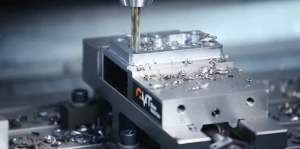
How Does CNC Milling Work?
The CNC milling process can be broken down into five main steps:
1. Design Creation (CAD Modelling)
The process begins with creating a digital blueprint of the part. Engineers use CAD (Computer-Aided Design) software such as AutoCAD, SolidWorks, or Fusion 360 to design a 2D drawing or a 3D model. This file contains exact dimensions, tolerances, and features the finished part must have. In some cases, metadata like material choice and required surface finishes are also included. The CAD model acts as the foundation for everything that follows.
2. CAM Conversion
The CAD model is then transferred into CAM (Computer-Aided Manufacturing) software. This step generates the toolpaths that dictate how the cutting tools will move to shape the material. CAM software also converts these toolpaths into machine-readable instructions, typically G-code and M-code.
- G-code controls the actual movement of the machine along its axes, feed rates, and spindle speeds.
- M-code handles auxiliary functions such as turning the coolant on or off, controlling tool changes, and spindle direction.
Before machining begins, engineers usually run a simulation to verify the toolpaths, check for potential collisions, and optimise the sequence for efficiency.
3. Machine Setup
The machine setup stage involves preparing both the workpiece and the machine itself.
- The raw material block is mounted securely on the machine bed using vices, fixtures, or clamps. Proper workholding is critical to avoid movement or vibration during machining.
- Cutting tools such as drills, end mills, or face mills are installed into the spindle or automatic tool changer.
- The machine is calibrated by setting the work coordinate system (WCS). This establishes a reference point so the machine knows where the workpiece begins in three-dimensional space.
- The coolant system is adjusted to control heat and friction during cutting.
4. Machining Process
Once setup is complete, the actual milling begins. The CNC machine executes the G-code instructions, guiding the spindle and cutting tools with extreme precision.
- The spindle rotates the cutting tool at high speeds, often tens of thousands of revolutions per minute.
- The cutting tool progressively removes material from the workpiece, layer by layer, until the final shape is achieved.
- Depending on the machine, movement occurs along three, four, or five axes, allowing the machine to create complex geometries.
- Throughout the process, sensors and control systems monitor cutting speeds, tool wear, and part dimensions to ensure accuracy.
5. Post-Processing
After milling, parts often require finishing to meet final specifications.
- Deburring removes sharp edges or burrs left by the cutting process.
- Surface finishing methods such as polishing, bead blasting, or coating are applied for both functional and aesthetic purposes.
- Heat treatment may be performed to improve material strength or durability.
- Quality control checks are carried out using tools like coordinate measuring machines (CMMs) or laser scanners to verify that the part matches design tolerances.
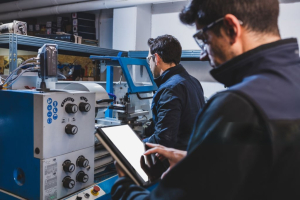
Components of a CNC Milling Machine
A CNC milling machine is built from several key components that ensure accuracy, efficiency, and reliability.
Frame & Bed
The frame and bed provide structural rigidity, absorb vibrations, and keep machining stable even under heavy loads.
Spindle
The spindle holds and rotates the cutting tool at variable speeds, ensuring precise cuts and smooth finishes.
Cutting Tools
These include end mills, face mills, drills, and ball nose cutters, each designed for specific milling tasks.
Axes
Movement occurs along X, Y, and Z, with advanced machines adding rotational axes (A, B, or C) for complex geometries.
Control Panel
The control panel lets operators load CNC programs, adjust parameters, and monitor the machining process.
Automatic Tool Changer (ATC)
The ATC switches tools automatically, reducing downtime and enabling complex parts in a single setup.
Coolant System
Coolant reduces heat, lubricates cutting, removes chips, and extends tool life during high-speed machining.
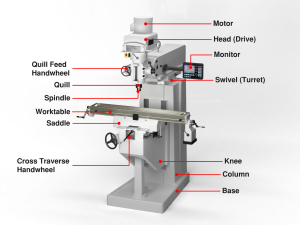
Types of CNC Milling Operations
CNC milling machines can perform a wide range of operations, with the most common being:
Face Milling
Used to produce flat surfaces or shallow contours on the workpiece. It’s often employed to create a smooth finish or prepare the part for further machining.
Plain Milling
Cuts along the surface to create a uniform plane. This is one of the simplest operations, commonly used for reducing thickness or squaring parts.
Angular Milling
Machines angled surfaces with accuracy. It is frequently used to cut grooves, chamfers, or precise inclines on components.
Form Milling
Creates curved or irregular shapes. This method is useful for parts with custom contours such as gears or decorative features.
Slot and Side Milling
Cuts slots, keyways, or side features into the material. It’s widely applied in automotive, aerospace, and tool-making industries.
Gang Milling
Uses multiple cutters at once to increase efficiency. This saves time by performing different operations in a single pass.
At Kirmell, we have the expertise and facilities to carry out all these CNC milling operations with precision, ensuring reliable results for both small-scale and large-scale projects. Contact us for more details.
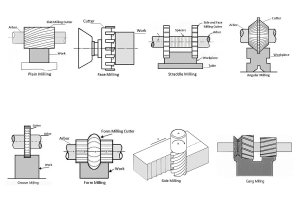
CNC Milling Applications
CNC milling has applications across nearly every industry:
- Automotive – Engine blocks, gearboxes, custom components, and prototypes.
- Medical – Surgical instruments, implants, prosthetics, and dental devices.
- Electronics – Housings, connectors, and circuit board prototypes.
- Tool & Die Making – Moulds, dies, and fixtures used for other manufacturing processes.
This versatility explains why CNC milling is a cornerstone technology across global manufacturing.
Benefits of CNC Milling
CNC milling provides numerous advantages compared to traditional methods, making it a preferred choice in modern manufacturing.
High Precision & Accuracy
CNC machines consistently produce parts within extremely tight tolerances. This precision is critical for industries such as aerospace, medical, and automotive, where even minor errors can cause major issues.
Read in more detail about What Makes CNC Machining Ideal for Prototyping and Mass Production, because of its precision and efficiency.
Repeatability
Once a design is programmed, it can be reproduced over and over with no variation. This guarantees uniformity across large production batches and ensures long-term reliability.
Efficiency
Automated machining reduces setup time, eliminates manual errors, and increases throughput. Multi-axis machines can perform several operations in a single run, cutting overall production time.
Versatility
CNC milling handles simple parts as well as highly complex geometries. It can also machine a wide range of materials, from lightweight plastics to high-strength metals, adapting easily to different industries.
Reduced Labour Intensity
Operators supervise the process rather than guide every cut. This lowers physical strain, minimises risk of injury, and allows skilled staff to focus on programming and quality control.
Scalability
The process is equally suited to one-off prototypes and full-scale mass production. Manufacturers can move quickly from development to large-volume runs without needing to reconfigure equipment extensively.
Cost Considerations for CNC Milling
The Cost of CNC milling is influenced by several important factors:
Material Selection
Different materials vary widely in price and machinability. Metals like aluminium are affordable and easy to machine, while harder alloys such as titanium or stainless steel cost more both in raw material and cutting time.
Machine Type (3-Axis vs. 5-Axis)
Basic 3-axis machines are less expensive to operate but limited in the complexity of parts they can produce. Advanced 5-axis CNC milling machines can handle intricate geometries in fewer setups, but the machine time is more expensive due to higher operating and maintenance costs.
Complexity of the Part
Parts with intricate designs, tight tolerances, or multiple features require longer programming and machining times. Complex parts may also demand more tool changes and setups, all of which add to the overall cost.
Production Volume
Low-volume runs are generally more expensive per unit because setup costs are spread over fewer parts. For high-volume production, the per-part cost decreases significantly, making CNC milling more economical at scale.
Outsourcing vs. Ownership
Small businesses and startups often turn to professional CNC milling machine services instead of purchasing machines outright. This avoids high upfront investments in equipment, maintenance, and skilled labour, while still delivering high-quality results.
Kirmell CNC Milling Services
At Kirmell, we provide CNC milling services designed to meet the needs of industries across the UK and beyond. With decades of engineering expertise, advanced CNC equipment, and a fully equipped in-house toolroom, we deliver precision components for sectors such as automotive, aerospace, construction, and manufacturing.
Whether you require one-off prototypes, small batch runs, or large-scale production, our team can handle a wide range of materials, including steel, stainless steel, aluminium, and engineered plastics. We combine the flexibility of short-run projects with the capability to scale for high-volume manufacturing.
By choosing Kirmell, you gain access to reliable quality, ISO-certified processes, and a trusted partner who understands the importance of accuracy, speed, and cost efficiency in every project. Contact us today to discuss your CNC milling requirements and get a tailored quote.
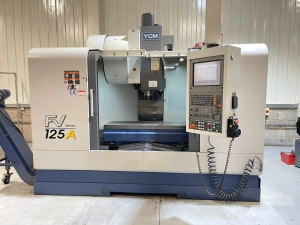
Conclusion
CNC milling has revolutionised modern manufacturing by combining automation, precision, and versatility. From aerospace components to medical implants, the technology enables industries to produce parts that were once thought impossible.
With advanced machines like the 5-axis CNC milling machine, even the most complex parts can be manufactured with unmatched accuracy. Meanwhile, smaller workshops and innovators benefit from tools like the mini CNC milling machine, which bring professional machining capabilities to compact spaces.
FAQs
What is CNC milling used for?
What materials can be machined with CNC milling?
How accurate is CNC milling?
How much does CNC milling cost?
Is CNC milling affordable for small businesses?
When should I use CNC milling instead of 3D printing?
Can CNC milling handle both prototyping and large-scale production?


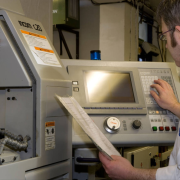
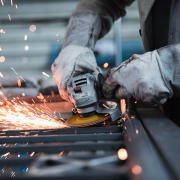
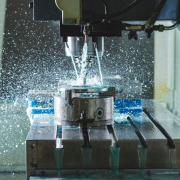
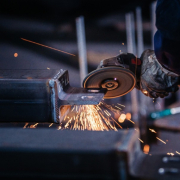
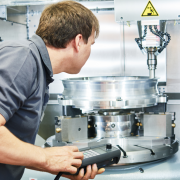

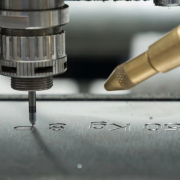


Leave a Reply
Want to join the discussion?Feel free to contribute!